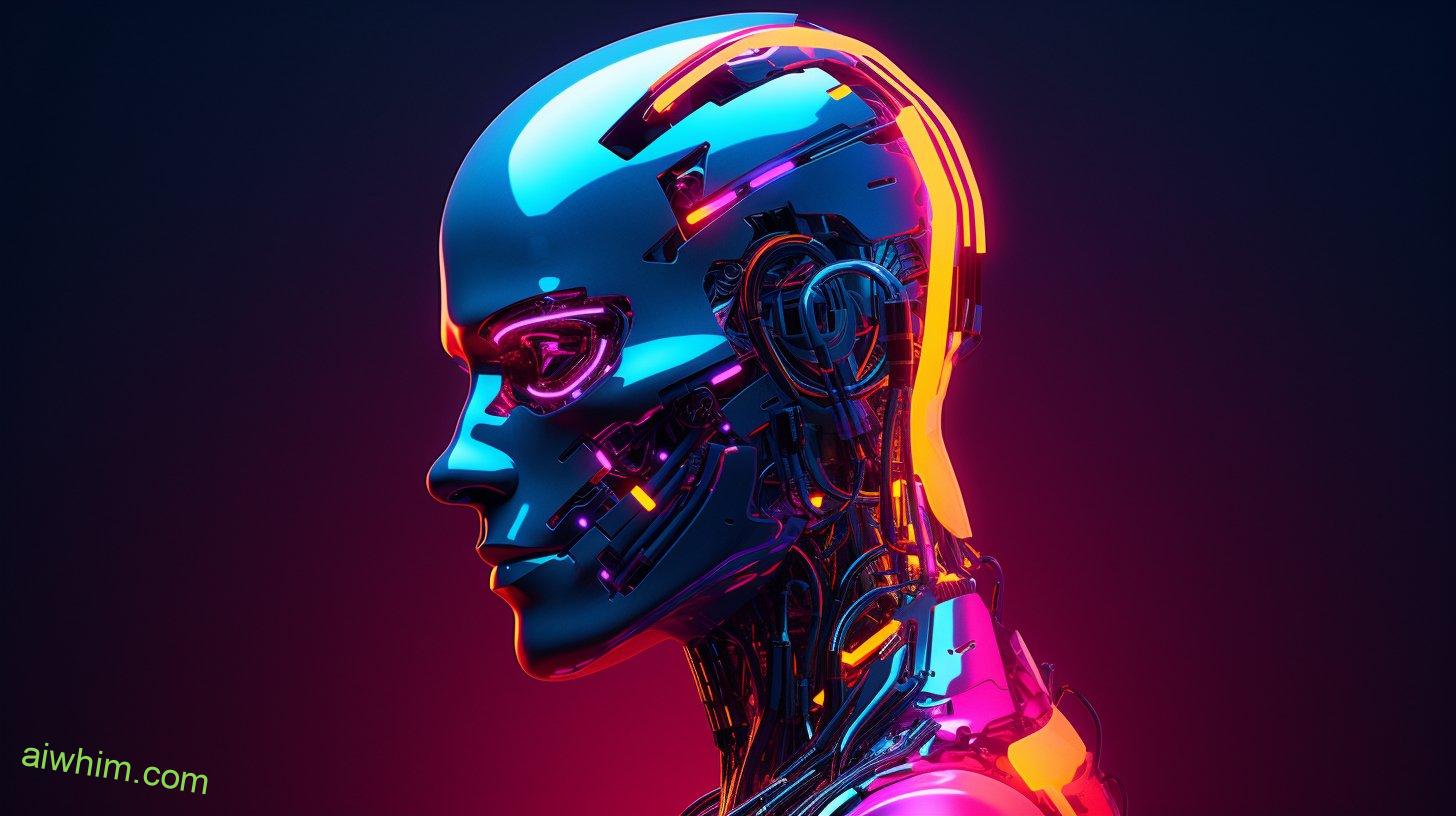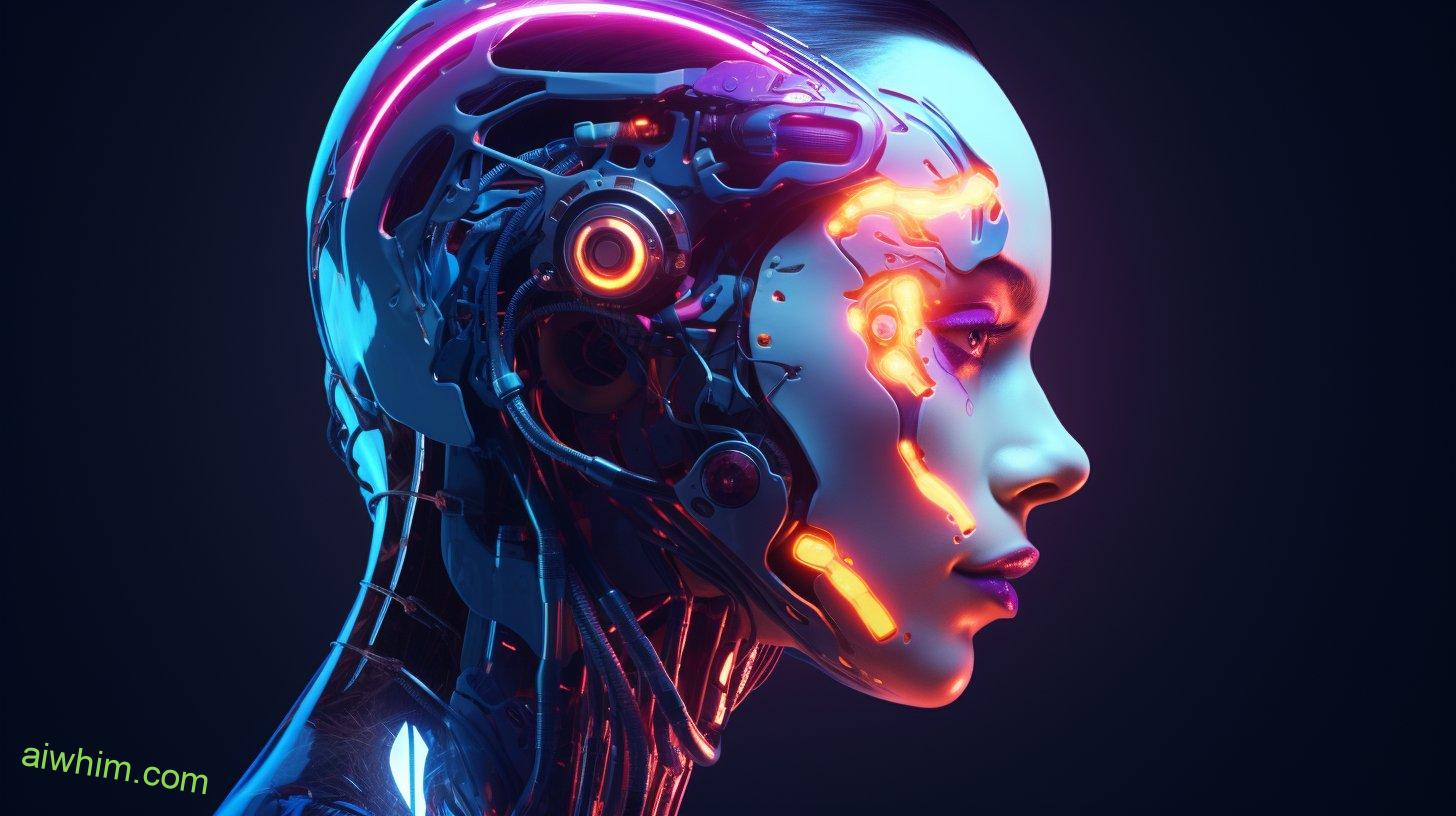Imagine a world where the steady flow of water through treatment plants resembles a symphony, conducted flawlessly by an unseen force. Well, that world is closer than you might think, thanks to the influence of artificial intelligence (AI) in water and wastewater treatment.
From automating water quality monitoring to optimizing treatment processes, AI’s potential in this industry is vast. But what does this mean for the jobs in water and wastewater treatment plants? How will AI impact the roles of those who ensure clean and safe water for our communities?
Join us as we explore the transformative power of AI and its implications for the future of water treatment plant jobs.
Key Takeaways
- AI-driven asset management systems revolutionize operations in water and wastewater treatment plants, optimizing maintenance schedules and reducing downtime and equipment failures.
- Real-time monitoring and data analysis improve the efficiency and effectiveness of water treatment processes, enhancing overall safety by detecting anomalies in water quality.
- AI applications in water resource management include smart irrigation, water availability and demand prediction, leak detection, and informed decision-making to mitigate the impact of water scarcity.
- Effective integration of AI into water and wastewater treatment plants requires training and upskilling of workers, focusing on technical aspects of AI and ethical implications and societal impact.

Overview of AI in Water Treatment
AI plays a crucial role in enhancing the efficiency and effectiveness of water treatment processes. When it comes to automation in maintenance processes, AI-driven asset management systems are revolutionizing the way water treatment plants operate. These systems use advanced algorithms and machine learning capabilities to analyze vast amounts of data and make accurate predictions about the condition and performance of equipment.
By implementing AI-driven asset management, water treatment plants can optimize maintenance schedules, reduce downtime, and minimize the risk of equipment failures. Traditional maintenance practices often rely on fixed schedules or manual inspections, which can be time-consuming and inefficient. With AI, maintenance activities can be automated and performed based on real-time data and predictive analytics. This not only saves time and resources but also improves the overall reliability and performance of the treatment plant.
Furthermore, AI can help identify potential issues or anomalies in the treatment processes by analyzing data in real-time. By continuously monitoring the input and output parameters, AI algorithms can detect any deviations from the expected values and alert operators to take corrective actions. This proactive approach enables water treatment plants to address problems before they escalate, ensuring the quality and safety of the treated water.
In addition, AI-driven asset management systems can optimize the allocation of resources, such as energy and chemicals, by constantly analyzing the operational data. By optimizing resource usage, water treatment plants can reduce costs and minimize their environmental impact.

Automation in Water Quality Monitoring
One way to enhance water treatment processes is through the automation of water quality monitoring. Automated monitoring systems play a crucial role in ensuring the safety and quality of our water supply. These systems use advanced technology to continuously monitor various parameters such as pH levels, turbidity, dissolved oxygen, and chlorine levels in real time. By doing so, they provide accurate and up-to-date information on the quality of water being treated.
Real-time data analysis is a key component of automated monitoring systems. It allows water treatment operators to quickly identify any deviations from the desired water quality standards and take immediate action to rectify the situation. This real-time analysis also enables proactive decision-making, helping to prevent potential issues before they become more serious.
Automation in water quality monitoring offers several benefits. Firstly, it reduces the reliance on manual sampling and laboratory testing, which can be time-consuming and labor-intensive. With automated systems, data is collected continuously, providing a more comprehensive understanding of water quality trends.
Secondly, automated monitoring systems improve the efficiency and effectiveness of water treatment processes. By providing real-time data, operators can optimize chemical dosing, adjust treatment parameters, and make informed decisions to ensure the highest quality of water output.
Furthermore, automated monitoring enhances the overall safety of water treatment plants. By detecting any anomalies or deviations in water quality, operators can quickly respond and prevent any potential health hazards.

Optimization of Treatment Processes With AI
To optimize treatment processes in water and wastewater treatment plants, artificial intelligence (AI) can be utilized. AI has the ability to make real-time optimizations, allowing for more efficient and cost-effective operations. By using advanced algorithms and machine learning techniques, AI can analyze vast amounts of data and make predictions to optimize various treatment processes.
One area where AI can have a significant impact is in real-time optimization. Traditional methods of optimizing treatment processes often rely on manual adjustments and periodic monitoring. However, AI can continuously monitor and analyze data from various sensors and instruments in real time. This enables the system to make instant adjustments and fine-tune the treatment processes for optimal performance.
Moreover, AI can improve energy efficiency in water and wastewater treatment plants. Energy consumption is a major concern in these plants, as it accounts for a significant portion of the operational costs. AI can analyze data on energy usage patterns, identify inefficiencies, and suggest ways to optimize energy consumption. For example, AI can adjust pump speeds, optimize chemical dosages, and regulate aeration rates to minimize energy wastage.

Role of AI in Diagnosing MAIntenance Needs
By harnessing its analytical capabilities, artificial intelligence (AI) plays a crucial role in efficiently diagnosing maintenance needs in water and wastewater treatment plants. AI offers a new way to optimize maintenance and asset management processes, ensuring the smooth operation of these critical facilities.
Maintenance optimization is a key challenge in water and wastewater treatment plants, as it involves managing a vast array of assets and equipment. With AI, the process becomes more streamlined and effective. AI systems can analyze vast amounts of data collected from sensors and other sources to identify potential maintenance needs. By continuously monitoring the condition of equipment, AI can detect patterns and anomalies that may indicate the need for maintenance or repair.
One of the main advantages of AI in diagnosing maintenance needs is its ability to predict failures before they occur. By analyzing historical data, AI algorithms can identify early warning signs of potential equipment failures. This predictive capability allows plant operators to take proactive measures, such as scheduling preventive maintenance or replacing faulty components, before a failure disrupts operations.
AI also plays a vital role in asset management, helping plant operators prioritize maintenance tasks based on the criticality of each asset. By analyzing historical data and considering factors such as asset age, usage, and performance, AI can provide recommendations on maintenance schedules and resource allocation. This ensures that limited resources are directed towards the most critical assets, maximizing their lifespan and minimizing downtime.

Predictive Analytics for Improved Plant Efficiency
Harnessing the power of predictive analytics can significantly improve the efficiency of water and wastewater treatment plants, building upon the diagnostic capabilities of AI discussed earlier. By implementing predictive maintenance strategies and real-time monitoring, you can optimize plant operations and reduce downtime.
Predictive maintenance involves using historical data and machine learning algorithms to anticipate equipment failures before they occur. By analyzing patterns and trends, AI can identify early warning signs of potential malfunctions, allowing you to address them proactively. This not only prevents costly breakdowns but also minimizes the risk of service disruptions and environmental contamination. With predictive maintenance, you can schedule maintenance activities when they’re most convenient and cost-effective, maximizing the lifespan of your equipment and reducing maintenance costs.
Real-time monitoring takes the benefits of predictive maintenance a step further. By continuously monitoring various parameters, such as water quality, flow rates, and energy consumption, AI can detect deviations from normal operating conditions. This enables you to quickly identify and address any issues that may arise, ensuring optimal plant performance at all times. Real-time monitoring also allows you to make data-driven decisions and adjust process parameters in real-time, maximizing efficiency and minimizing resource waste.

AI-Driven Decision Support Systems
Implementing AI-driven decision support systems can greatly enhance the decision-making process in water and wastewater treatment plants. These systems leverage AI technology to analyze vast amounts of data and provide valuable insights to plant operators and managers. By utilizing AI-powered algorithms, these decision support systems can optimize various aspects of the treatment process, leading to improved efficiency and cost-effectiveness.
AI-driven optimization plays a crucial role in water and wastewater treatment plants. It enables plant operators to make informed decisions based on real-time data and predictive analytics. With AI’s ability to quickly process and analyze large volumes of data, it can identify patterns, anomalies, and trends that human operators might miss. This empowers operators to take proactive measures to prevent potential issues and improve overall plant performance.
Moreover, AI-powered decision-making provides a level of accuracy and precision that’s difficult to achieve manually. Algorithms can consider multiple factors simultaneously, such as water quality parameters, energy consumption, and equipment maintenance schedules, to determine the optimal course of action. This not only helps in ensuring compliance with regulatory standards but also minimizes operational costs and maximizes resource utilization.

Enhancing Data Collection and Analysis With AI
To enhance data collection and analysis, AI technology offers valuable capabilities to water and wastewater treatment plants. With the power of AI, you can revolutionize the way you gather and analyze data, leading to more efficient and effective operations. Here are some ways AI can enhance data collection and analysis in water and wastewater treatment plants:
- Real-time monitoring: AI-powered sensors can continuously collect data on water quality, flow rates, and other relevant parameters. This real-time monitoring allows you to detect and address any issues promptly, ensuring the water treatment process is always optimized.
- Predictive analytics: AI algorithms can analyze large volumes of historical data to identify patterns and predict future outcomes. By leveraging these predictive analytics capabilities, you can anticipate equipment failures, optimize chemical dosage, and predict water demand, enabling proactive decision-making and minimizing disruptions.
- Data integration and visualization: AI can help integrate data from various sources, such as SCADA systems, sensors, and weather forecasts. By consolidating this data into a unified platform and utilizing AI-powered visualization tools, you can gain valuable insights into the entire water treatment process, enabling better decision-making and resource allocation.
While AI offers significant benefits in enhancing data collection and analysis, it’s crucial to consider the ethical implications and data privacy concerns. As you integrate AI into your operations, make sure to prioritize data security and establish protocols to protect sensitive information. Additionally, it’s essential to maintain transparency and ensure that AI algorithms are fair and unbiased in their analysis, avoiding any potential discrimination or harm to individuals or communities.

AI Applications in Water Resource Management
With the valuable capabilities of AI, water and wastewater treatment plants can now utilize AI applications in water resource management to optimize operations and ensure efficient utilization of resources. AI can play a crucial role in addressing the challenges of smart irrigation and water scarcity.
Smart irrigation is an innovative approach that utilizes AI algorithms to determine the optimal amount of water needed for irrigation based on various factors such as weather conditions, soil moisture levels, and plant types. By analyzing data from sensors and weather forecasts, AI can automatically adjust irrigation schedules and ensure that water is used efficiently without wastage. This not only helps conserve water but also reduces the energy consumption associated with pumping and treating water.
Water scarcity is a pressing issue faced by many regions around the world. AI can assist in managing water resources more effectively by analyzing large amounts of data from various sources such as satellite imagery, weather patterns, and water usage data. By identifying patterns and trends, AI can help predict water availability and demand, enabling water resource managers to make informed decisions and implement proactive measures to mitigate the impact of water scarcity.
Furthermore, AI can also assist in detecting leaks and identifying areas of water loss in distribution networks. By analyzing data from sensors and flow meters, AI algorithms can quickly identify anomalies and alert operators to potential issues, allowing for timely repairs and minimizing water loss.

Impact of AI on Workforce Roles and Responsibilities
AI’s integration into water and wastewater treatment plants is reshaping workforce roles and responsibilities. As technology advances and AI capabilities grow, the traditional way of managing these facilities is undergoing a significant transformation. Here are three key ways in which AI is impacting workforce roles and responsibilities:
- Workforce Transformation:
- AI technology is automating routine and repetitive tasks, enabling workers to focus on more complex and strategic responsibilities.
- Employees are required to upskill and adapt to new technologies, acquiring the necessary knowledge and expertise to operate and maintain AI systems.
- The workforce is transitioning from manual labor to data analysis and decision-making roles, leveraging AI-generated insights to optimize plant operations.
- Job Displacement:
- With the implementation of AI, some jobs that were previously performed by humans may become obsolete. For example, AI can autonomously monitor and control processes, reducing the need for manual intervention.
- However, AI also creates new job opportunities focused on managing and maintaining AI systems, ensuring their proper functioning, and analyzing the data they generate.
- It’s essential for organizations to provide retraining and reskilling programs to support employees affected by job displacement, enabling them to transition into new roles within the AI-driven workforce.
- Enhanced Efficiency and Productivity:
- AI’s ability to process vast amounts of data in real-time allows for more accurate and efficient decision-making, leading to improved plant performance and resource optimization.
- Workers can leverage AI-generated insights to proactively address issues and make data-driven decisions, enhancing overall efficiency and productivity.
- As AI systems continue to evolve and improve, the workforce will increasingly rely on these technologies to streamline operations, reduce costs, and enhance overall plant performance.
The integration of AI into water and wastewater treatment plants brings about a transformative shift in workforce roles and responsibilities. While job displacement may occur, it also presents new opportunities for skill development and enhanced efficiency. Embracing this technological change and providing support for workforce transformation is crucial for organizations to thrive in the AI-driven future.

Training and Upskilling for AI Integration
As technology continues to advance, it’s crucial for workers in water and wastewater treatment plants to undergo training and upskilling to integrate AI effectively into their operations. The integration of AI into these plants can bring numerous benefits, such as increased efficiency, improved accuracy, and reduced costs. However, there are challenges that come with upskilling for AI integration.
One of the main upskilling challenges is the need for workers to adapt to new technologies and learn how to use them effectively. This requires a willingness to embrace change and a commitment to continuous learning. Workers must be open to acquiring new skills and knowledge to keep up with the rapid pace of technological advancements.
Another challenge is the ethical implications of AI integration in water and wastewater treatment plants. While AI can streamline processes and enhance decision-making, it also raises concerns about job displacement and the potential for bias in algorithmic decision-making. It’s essential for workers to be trained on ethical considerations related to AI to ensure that its implementation aligns with societal values and norms.
Training and upskilling programs should address these challenges by providing workers with the necessary knowledge and skills to effectively integrate AI into their work. These programs should focus not only on the technical aspects of AI but also on the ethical implications and societal impact.

Challenges in Implementing AI in Water Treatment Plants
Workers in water treatment plants face several challenges when it comes to implementing AI into their operations. As the technology continues to advance, it brings both opportunities and concerns.
Here are some of the challenges in AI implementation and its impact on job security:
- Resistance to change: Many workers may resist the integration of AI into their daily tasks due to fear of job loss or job displacement. It’s important to address these concerns and provide reassurance that AI is meant to enhance their work, not replace them.
- Lack of expertise: Implementing AI requires specialized knowledge and skills that may not be readily available within the current workforce. Training and upskilling programs need to be implemented to help workers adapt to the new technology and ensure a smooth transition.
- Data management and privacy: AI relies heavily on data, and ensuring the security and privacy of this data is crucial. Water treatment plants must have robust systems in place to protect sensitive information from cyber threats and unauthorized access.
The impact of AI on job security is a valid concern for workers in water treatment plants. While AI has the potential to automate certain tasks and improve efficiency, it’s unlikely to completely replace human workers. Instead, AI can assist workers by providing real-time data analysis, predictive maintenance, and optimization of processes.

Ethical Considerations in AI Adoption
Amidst the challenges faced by workers in water treatment plants, it’s crucial to consider the ethical implications of adopting AI technology. As we integrate AI into these critical systems, we must examine the ethical considerations and societal implications that arise. While AI has the potential to improve efficiency and accuracy in water treatment processes, it’s essential to ensure that its implementation aligns with our values and respects the rights and well-being of workers and the community.
One of the primary ethical considerations in AI adoption is the impact on jobs. As AI technology takes on more tasks traditionally performed by humans, there’s a concern about potential job displacement. It’s essential to manage this transition ethically, ensuring that workers aren’t left behind and are provided with opportunities for retraining and job security. Additionally, we must ensure that AI doesn’t perpetuate existing inequalities in the workforce, such as gender or racial biases.
Another ethical consideration is transparency and accountability. AI systems, particularly those using machine learning algorithms, can be complex and opaque. It’s crucial to have transparency in the decision-making processes of AI systems, especially when they’ve significant impacts on people’s lives. We must also establish mechanisms for accountability, ensuring that AI systems are fair, unbiased, and free from discrimination.
Furthermore, the societal implications of AI adoption must be carefully evaluated. AI can bring significant benefits to water treatment plants, including improved efficiency, reduced costs, and enhanced water quality. However, we must also consider potential risks and unintended consequences. For example, reliance on AI systems may lead to over-reliance and complacency, reducing human vigilance and the ability to respond to unforeseen situations.

Cost and ROI Analysis of AI Implementation
Implementing AI in water and wastewater treatment plants requires a thorough cost and return on investment (ROI) analysis. Before diving into the world of AI, it’s important to carefully consider the financial implications and potential challenges that may arise during implementation. Here are some key points to keep in mind:
- Cost Analysis:
- Initial Investment: Implementing AI technology in water and wastewater treatment plants involves upfront costs such as purchasing the necessary hardware and software, as well as training employees on how to use and maintain the new system.
- Operational Costs: AI systems require ongoing maintenance, upgrades, and technical support. It’s crucial to factor in these expenses when conducting a cost analysis.
- Potential Savings: While the initial investment and operational costs shouldn’t be overlooked, it’s essential to consider the potential long-term savings that AI can bring. AI has the potential to optimize processes, reduce energy consumption, and minimize waste, leading to significant cost savings over time.
- Implementation Challenges:
- Data Integration: Integrating AI systems with existing infrastructure and data management systems can present challenges. Ensuring compatibility and smooth data flow between different systems is crucial for successful implementation.
- Workforce Transition: Implementing AI may require a shift in job roles and responsibilities for the workforce. Proper training and support must be provided to ensure a smooth transition and acceptance of AI technology.
- Regulatory Compliance: Water and wastewater treatment plants must comply with various regulations and standards. Implementing AI systems should align with these requirements and ensure that the technology meets all necessary compliance measures.

Case Studies of Successful AI Integration in Water Treatment
AI integration in water treatment has led to significant improvements in efficiency and cost-effectiveness.
Let’s take a look at some case studies that showcase successful AI integration in water treatment.
One notable case study comes from a water treatment plant in a bustling city. The plant faced challenges in accurately predicting water demand and optimizing chemical dosing. By implementing AI technology, they were able to analyze historical data, weather patterns, and other relevant factors to accurately forecast water demand. This resulted in a more efficient distribution system, reducing unnecessary water production and minimizing energy consumption. Additionally, AI algorithms optimized chemical dosing, ensuring the right amount of chemicals were used at the right time, leading to cost savings and improved water quality.
Another case study involves a wastewater treatment plant that struggled with maintaining consistent effluent quality. Traditional methods relied on manual monitoring and adjustments, often leading to inconsistencies and increased costs. With the introduction of AI, real-time data from sensors and instruments were continuously analyzed to optimize treatment processes. The AI system automatically adjusted operating parameters, such as aeration and chemical dosing, to maintain optimal conditions and achieve consistent effluent quality. As a result, the plant experienced significant cost savings, reduced energy consumption, and improved compliance with environmental regulations.
These case studies highlight the successful integration of AI in water treatment, resulting in enhanced efficiency and cost-effectiveness.

Future Outlook: Ai’s Potential in Water Treatment Industry
With the successful integration of AI in water treatment showcased in the previous case studies, it’s evident that the water treatment industry has immense potential for further advancements in the future. As AI technology continues to evolve, it opens up a world of possibilities for improving water treatment processes and addressing the challenges faced by the industry.
Here are some future applications, benefits, and challenges of AI in the water treatment industry:
- Enhanced efficiency: AI can analyze vast amounts of data and optimize water treatment processes, leading to increased efficiency and reduced operational costs. By automating routine tasks and providing real-time monitoring, AI can help plant operators make informed decisions and respond quickly to changing conditions.
- Improved water quality: AI algorithms can analyze water quality data in real-time, detecting contaminants and predicting potential issues. This allows for proactive measures to be taken, ensuring that the treated water meets regulatory standards and is safe for consumption.
- Predictive maintenance: AI-powered systems can monitor equipment performance and detect anomalies, allowing for predictive maintenance and minimizing downtime. By identifying potential failures before they occur, AI can help water treatment plants avoid costly repairs and ensure uninterrupted operation.
Despite the numerous benefits, there are also challenges that need to be addressed in integrating AI into the water treatment industry:
- Data availability and quality: AI algorithms require large amounts of high-quality data to train and perform effectively. Ensuring the availability and reliability of data from various sources can be a significant challenge.
- Cybersecurity: As water treatment plants become more connected and reliant on AI systems, the risk of cyber threats increases. Protecting sensitive data and securing AI-driven infrastructure is crucial to maintaining the integrity of water treatment processes.
- Human expertise: While AI can automate and optimize many tasks, human expertise and judgment will still play a crucial role in decision-making. Striking the right balance between AI-driven automation and human oversight is essential for the successful integration of AI in the water treatment industry.

Frequently Asked Questions
How Does AI Impact the Workforce Roles and Responsibilities in Water Treatment Plants?
AI’s impact on workforce roles and influence on job responsibilities have revolutionized the water treatment plant industry. You’ll witness the transformation of traditional positions, as AI brings efficiency, automation, and enhanced decision-making capabilities to the table.
What Are the Challenges Faced in Implementing AI in Water Treatment Plants?
Implementing AI in water treatment plants can present challenges such as cost, technical expertise, and resistance to change. However, with proper planning and training, you can overcome these obstacles and harness the benefits of AI for efficient and sustainable water treatment processes.
What Ethical Considerations Should Be Taken Into Account When Adopting AI in Water Treatment?
When adopting AI in water treatment, consider ethical concerns like data privacy and bias mitigation. You should ensure that personal information is protected and that AI algorithms are free from discriminatory practices.
Can You Provide Examples of Successful Integration of AI in Water Treatment Plants?
AI applications in water treatment plants have successfully integrated automation to optimize processes and improve efficiency. This has led to cost savings, increased productivity, and enhanced water quality. However, it has also raised concerns about job automation and its impact on workers.
What Is the Potential Future Outlook for AI in the Water Treatment Industry?
In the future, AI in water treatment could be as essential as oxygen in the air. With advancements in technology, AI will revolutionize the industry, offering innovative solutions and freeing up time for more critical tasks.

Conclusion
You’ll be amazed at how AI has revolutionized water treatment. It’s like having a team of super smart robots working tirelessly to ensure clean water for everyone.
With AI’s advanced monitoring and optimization capabilities, treatment processes have become more efficient and accurate. AI can even predict maintenance needs and improve plant efficiency through predictive analytics.
The future looks bright for AI in the water treatment industry, as it continues to make waves in creating a cleaner and healthier world.







